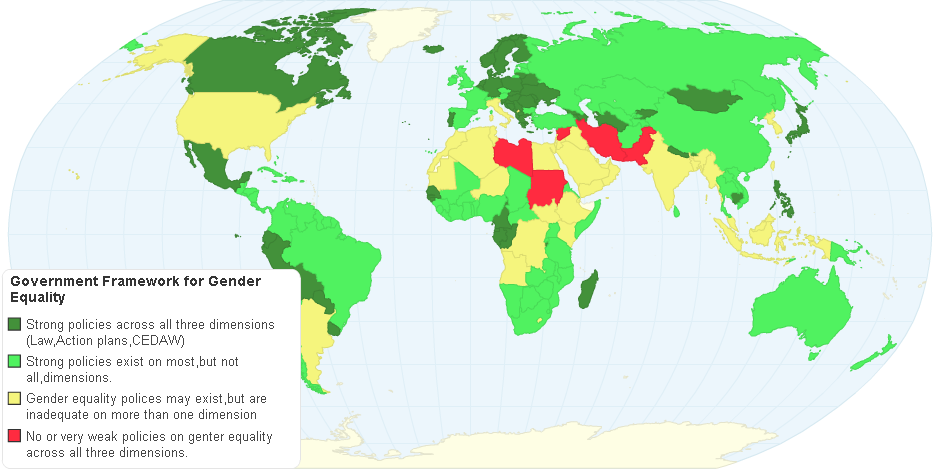This chart shows Government Framework for Gender Equality.
Gender equality, also known as sex equality, gender egalitarianism, sexual equality, or equality of the genders, is the view that everyone should receive equal treatment and not be discriminated against based on their gender.This is one of the objectives of the United Nations Universal Declaration of Human Rights, which seeks to create equality in law and in social situations, such as in democratic activities and securing equal pay for equal work.
In practice, the objective of gender equality is for people to acquire, if they so choose, equal treatment throughout a society, not just in politics, the workplace, or any other policy-designated sphere.
A government is the system by which a state or community is controlled. In the case of this broad associative definition, government normally consists of legislators, administrators, and arbitrators. Government is the means by which state policy is enforced, as well as the mechanism for determining the policy of the state.
There has been criticism from some feminists towards the political discourse and policies employed in order to achieve the above items of "progress" in gender equality, with critics arguing that these gender equality strategies are superficial, in that they do not seek to challenge social structures of male domination, and only aim at improving the situation of women within the societal framework of subordination of women to men.
9 years ago

